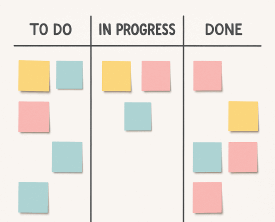The Ultimate Guide to Service Scheduling Software for Small Businesses
By Mark Ballance, Resource Scheduling Specialist at Schedule it Ltd since 2010.
 Small businesses face the challenge of juggling multiple tasks, managing people and clients, and all whilst striving for growth and success. Service scheduling software is the game-changing tool designed to streamline your operations and improve your efficiency.
Small businesses face the challenge of juggling multiple tasks, managing people and clients, and all whilst striving for growth and success. Service scheduling software is the game-changing tool designed to streamline your operations and improve your efficiency.Imagine being able to automate appointments, manage staff schedules, and track customer interactions, all in one place. With the right software, you can free up precious time, enhance customer satisfaction, and ultimately drive growth.
This ultimate guide will walk you through the essential features to look for in service scheduling software, the best options available, and how to implement this powerful tool effectively. Mastering service scheduling can be your secret weapon to winning in a competitive market. We dive deep into transforming your workflow and supercharging your success!
Why Small Businesses Need Service Scheduling Software
For small business operations, the need for efficiency and streamlined processes has never been more crucial. Small business owners and its staff often wear multiple hats, juggling everything from customer service to inventory management. This multitasking can become overwhelming, leading to missed appointments, scheduling conflicts, and ultimately, dissatisfied customers. Service scheduling software provides the solution to these pain points, offering a centralized system to manage appointments, staff schedules, and customer interactions seamlessly.
One of the primary reasons small businesses need service scheduling software is to save time. Manual scheduling can be a time-consuming process, often requiring back-and-forth communication with customers and staffs. With so many changes and updates to be tracked and made, service scheduling software can help make this process clearer, quicker and easier. This not only reduces the burden on your staff but also minimizes the risk of human error, ensuring that appointments are accurately recorded and managed.
Furthermore, service scheduling software enhances customer satisfaction. In today's digital age, customers expect convenience and efficiency. Providing them with the ability to book appointments online, receive reminders, and easily reschedule if necessary meets these expectations and improves their overall experience with your business. Happy customers are more likely to return and recommend your services to others, driving growth and success for your business.
Key Features to Look for in Scheduling Software

When selecting service scheduling software for your small business, it is essential to consider the features that will best meet your needs. Here are a list of the top 3 features we consider as critical:
Benefits of Using Service Scheduling Software
The advantages of implementing service scheduling software in your small business are many. Firstly, it significantly enhances operational efficiency. With easy and efficient scheduling, your staff can focus on more value-added tasks rather than spending time on administrative duties. This leads to increased productivity and a more streamlined workflow, ultimately boosting your bottom line.
Moreover, service scheduling software provides valuable insights into your business operations. By analyzing data on appointment trends, customer preferences, and staff performance, you can make data-driven decisions to optimize your services. This can lead to better resource allocation, improved staff scheduling, and a more tailored approach to meeting your customers' needs. Ultimately, these insights can drive growth and give you a competitive edge in the market.
How to Choose the Right Scheduling Software for Your Business
Choosing the right scheduling software for your small business involves evaluating your specific needs and comparing them against the features offered by various solutions. Start by identifying your primary requirements. Do you need a simple tool for managing appointments, or do you require advanced features like payment processing and CRM integration? Understanding your needs will help narrow down your options.
Next, consider the scalability of the software. As your business grows, your scheduling needs may evolve. Ensure that the software you choose can accommodate an increasing number of appointments, staff members, and customers. Scalability is crucial for long-term success, as it allows you to expand your operations without having to switch to a new system.
Lastly, take advantage of free trials and demos. Many scheduling software providers offer trial periods or demo versions of their products. Use these opportunities to test the software and assess its usability, features, and integration capabilities. Involve your staff in the evaluation process to gather feedback and ensure that the chosen software meets everyone's needs. By conducting thorough research and testing, you can make an informed decision and select the best scheduling software for your business.
Integrating Service Scheduling Software with Existing Systems
Integrating service scheduling software with your existing systems is a critical step to ensure a seamless workflow. Start by identifying the systems and tools that your business currently uses, such as CRM software, email marketing platforms, and payment processing systems. The goal is to create a cohesive ecosystem where data flows seamlessly between different applications, eliminating manual data entry and reducing the risk of errors.
One of the most common integrations is with CRM software. By integrating your scheduling software with your CRM, you can ensure that customer information is automatically updated with appointment details. This provides a comprehensive view of customer interactions and enables personalized communication. For instance, you can send targeted email campaigns based on customers' booking history, enhancing customer engagement and loyalty.
Best Practices for Implementing Scheduling Software
Implementing service scheduling software successfully requires careful planning and execution. Start by setting clear goals and objectives for what you want to achieve with the software. This could include reducing appointment no-shows, improving staff productivity, or enhancing customer satisfaction. Having specific goals will guide your implementation process and help measure success.
Training your staff is another crucial step. Ensure that everyone who will be using the software receives comprehensive training on its features and functionalities. Provide resources such as user manuals, video tutorials, and support from the software provider. Encouraging your staff to familiarize themselves with the software will increase their confidence and competence, leading to smoother adoption and utilization.
Common Challenges and Solutions in Service Scheduling
Despite the numerous benefits, implementing service scheduling software can come with its own set of challenges. One common issue is resistance to change. Staff members who are accustomed to traditional scheduling methods may be hesitant to adopt new technology. To address this, involve them in the decision-making process and provide ample training and support. Highlight the benefits of the software and how it will make their tasks easier, fostering a positive attitude towards the change.
Another challenge is ensuring data accuracy and synchronization. Integrating multiple systems can sometimes lead to data discrepancies or synchronization issues. To mitigate this, choose software that offers robust integration capabilities and regularly syncs data across platforms. Conduct periodic audits to ensure data consistency and address any discrepancies promptly. Clear communication and collaboration between your IT team and software provider can also help resolve technical issues efficiently.
Future Trends in Service Scheduling Software
In conclusion, service scheduling software is a powerful tool that can transform the way small businesses operate. By managing staff schedules, and enhancing customer interactions, it streamlines your workflow and drives efficiency. The key to successful implementation lies in choosing the right software, integrating it with existing systems, and following best practices for adoption.
Looking ahead, several trends are shaping the future of service scheduling software. One such trend is the increasing use of artificial intelligence (AI) and machine learning. These technologies can analyze appointment data to predict trends, optimize scheduling, and provide personalized recommendations. For example, AI can suggest the best times for appointments based on past booking patterns, improving resource utilization and customer satisfaction.
Another emerging trend is the integration of mobile capabilities. With the rise of mobile technology, staff expect to see, update and manage their schedules on-the-go. Additionally, mobile notifications and reminders can further reduce no-shows and enhance communication.
As technology continues to evolve, service scheduling software will become even more sophisticated, offering advanced features and integrations. Staying informed about these trends and continuously evaluating your scheduling needs will ensure that your business remains competitive and successful. Embrace the power of service scheduling software, and unlock new opportunities for growth and efficiency in your small business.
Try Schedule it Free
No credit card required. Capterra/G2











